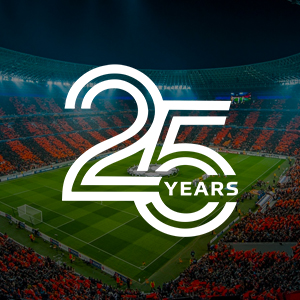Forbes.com | Neel Shelat: Contributor
Widely accepted to be the oldest app of its kind, LiveScore–as the name clearly suggests–is a live sports score app that is now in its 25th year of existence. Unsurprisingly, they have been trendsetters in the ever-growing industry for a number of years and continue to innovate, so I spoke to LiveScore Group CEO Sam Sadi to understand their history and what they are working on currently.
The Origins Of LiveScore
The idea of LiveScore was “born out of a necessity” for a Manchester United fan in South Africa named Peter Jerie, who was a programmer. He would often go out on treks but wanted to be updated with his team’s matches, so he wrote a code to get Teletext updates sent to his phone via SMS.
He soon realized that this could be a popular service after gauging reactions from his friends, so he registered LiveScore on the internet back in 1998. The business has grown leaps and bounds since then, but Sadi says the objective remains the same, “To fuel fans’ passion for sports and try to improve their experience with sports.”
One of the first additions to the app was an expansion in sports coverage. Although it started with the idea of having real-time soccer score updates delivered, it soon began to include cricket, basketball, hockey and tennis, although soccer remains its flagship offering.
In 2017, LiveScore was acquired by the Gamesys group of companies who then demerged what is presently the LiveScore Group in 2019, heralding an era of further progress for the platform.
Focusing on a soccer-oriented perspective, one of the key developments on the platform was what they call the “Convergence Model.”
The Convergence Model
Sadi says the convergence model was born out of a consumer need, pointing out that sports content delivery is quite flawed today as the average fan has to navigate through multiple apps and platforms and pay for various subscriptions. Therefore, he calls it, an “uneconomic, but also quite complex and fragmented landscape.”
So, LiveScore identified this problem and “started designing a product ecosystem that converges as many sports content types as possible in a single frictionless user experience.” This adds to live match scores through stats and data, written/video news and analysis content as well as betting, which they see as a “transactional type of sports content that is part of many sports fans’ experience.”
Sadi says their business model has a strategic edge over traditional online sports media companies, as LiveScore can monetize much more effectively rather than rely on ad revenue. He also sees an advantage over online sports betting companies, stating that they can attract and retain new users much more easily. Ultimately, he claims this enables them to provide more value to the user.
Live Broadcasting
An example Sadi cites is their free-to-air live broadcasts of every UEFA Champions League (UCL) match to half a million users in Ireland over the last three seasons. The integration of broadcasts into live score apps was unheard of just a few years ago, and even as it started it was either based on a pay-per-view model or only had lesser-followed leagues freely available.
Sadi recognizes that this model of putting premium sports behind paywalls naturally limits audience access, leading to the current generation of sports fans not having comfortable access and even giving it up for free snippets on Instagram, YouTube or such highlights-based platforms. He says LiveScore really believes in the free-to-air model, acknowledging that it does not make as much revenue as Pay TV operators do but believes that the audience growth and subsequent brand value increase and ad value increase sufficiently offsets it. In fact, he believes this to be a more sustainable equation.
However, this idea of making such premium content freely available to fans is much tougher to execute. The valuation of broadcast rights for the world’s top leagues is mind-numbingly high right now. For instance, the English Premier League’s; rather convoluted ongoing broadcast deal in the UK with Sky, BT and Amazon is worth over $6 billion over a three-year period from 2022 to 2025. Sadi acknowledges that the prices of live rights in many territories are quite distorted for a variety of reasons, so players like LiveScore have to find the right opportunities (as they did in Ireland) if they are to stick to the free-to-air model.
In any case, the idea of making sports freely accessible (or at least much more affordable) for fans is a prudent one–something that everyone from these apps to FIFA themselves is looking to work towards. Only time can tell how feasible it is, but this space is worth keeping an eye on.
For their part, Sadi says LiveScore will continue to cater to fans’ ever-growing wants by expanding their coverage across more sports and territories at least. Their premium live broadcasting plans will hinge on the results of the UCL experiment in Ireland among other factors, but at least they are trying to change something.
